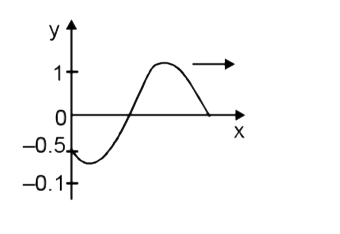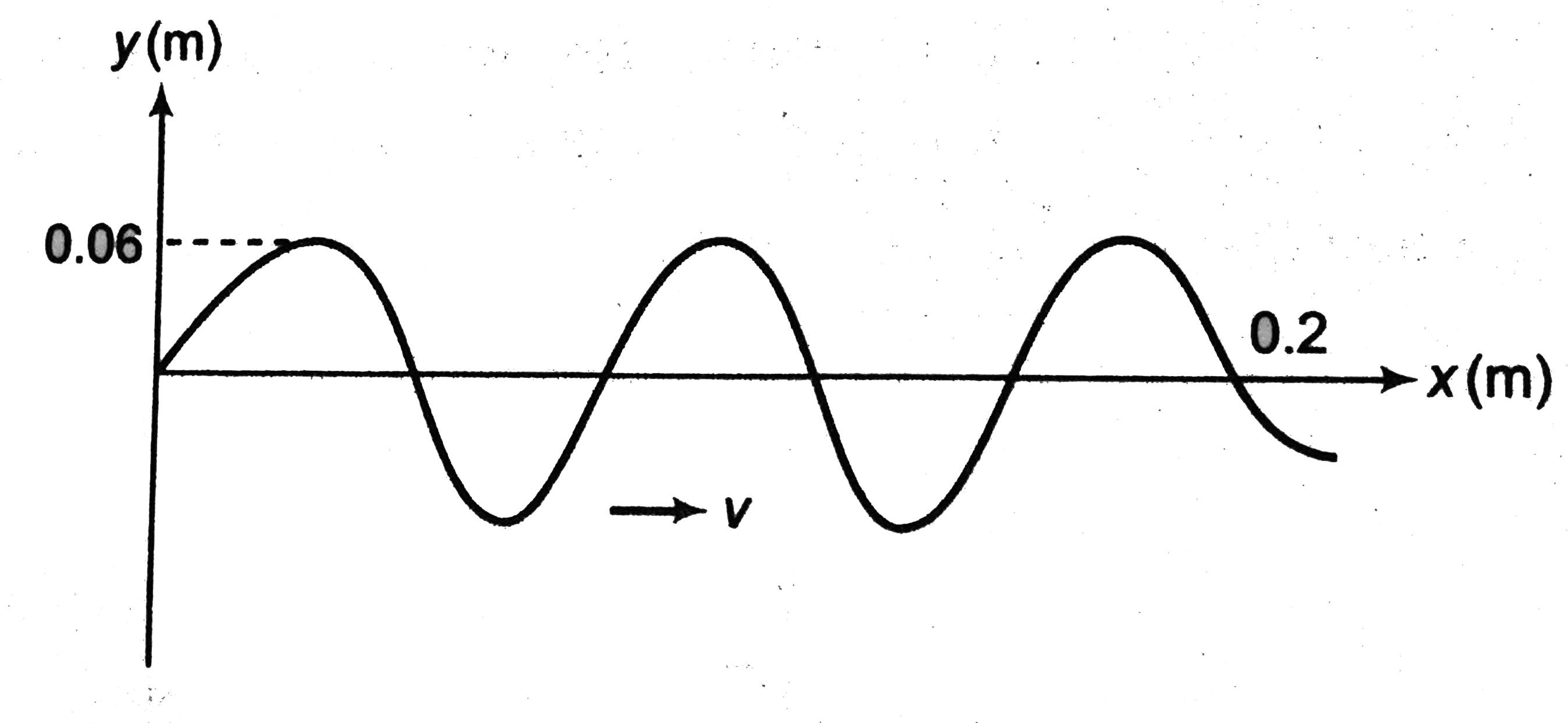in a sine wave ,positive of different particles at time t=0 is shown in figure. The equation for this wave if it is travelling along positive x -axis can be

y=Asin(ωt−kx)
y=Asin(kx−ωt)
y=Acos(ωt−kx)
y=Acos(kx−ωt)
The correct Answer is:B
Step by step video, text & image solution for in a sine wave ,positive of different particles at time t=0 is shown in figure. The equation for this wave if it is travelling along positive x -axis can be by Physics experts to help you in doubts & scoring excellent marks in Class 11 exams.
Updated on:21/07/2023Topper's Solved these Questions
- WAVE MOTIONBOOK - DC PANDEYCHAPTER - WAVE MOTIONEXERCISE - More Than One Option is Correct
23 Videos
- WAVE MOTIONBOOK - DC PANDEYCHAPTER - WAVE MOTIONEXERCISE - Comprehion Type Questions
19 Videos
- WAVE MOTIONBOOK - DC PANDEYCHAPTER - WAVE MOTIONEXERCISE - JEE MAINS
50 Videos
- VECTORSBOOK - DC PANDEYCHAPTER - VECTORSEXERCISE - Medical enrances gallery
9 Videos
- WORK, ENERGY & POWERBOOK - DC PANDEYCHAPTER - WORK, ENERGY & POWEREXERCISE - Level 2 Comprehension Based
2 Videos
Similar Questions
Knowledge Check
in a sine wave ,positive of different particles at time t=0 is shown in figure. The equation for this wave if it is travelling along positive x -axis can be
 Ay=Asin(ωt−kx)By=Asin(kx−ωt)Cy=Acos(ωt−kx)Dy=Acos(kx−ωt)
Ay=Asin(ωt−kx)By=Asin(kx−ωt)Cy=Acos(ωt−kx)Dy=Acos(kx−ωt)A plane progressive wave propagating along positive x-axis is
Ay=Asin(ωt+kx)By=Asin(ωt−kx)Cy=Asin(ωt−ky)Dy=Asinωtsinkxthe equation of a wave travelling along the positive x - axis ,as shown in figure at t = 0 is given by
 Asin(kx−ωt+π6)Bsin(kx−ωt−π6)Csin(ωt−kx+π6)Dsin(ωt−kx−π6)
Asin(kx−ωt+π6)Bsin(kx−ωt−π6)Csin(ωt−kx+π6)Dsin(ωt−kx−π6)
Which of the following equations represents as wave travelling along Y-axis?
View SolutionWhich of the following equations represents as wave travelling along Y-axis?
View SolutionThe equation of a wave travelling along the positive x-axis, as shown in figure at t=0 is given by :-
_E01_059_Q01.png) .
.
View SolutionConsider the snapshot of a wave traveling in positive x–direction

View SolutionFor the wave shown in figure, the equation for the wave, travelling along +x acis with velocity 350ms−1 when its position at t=0 is as shown

View Solution

